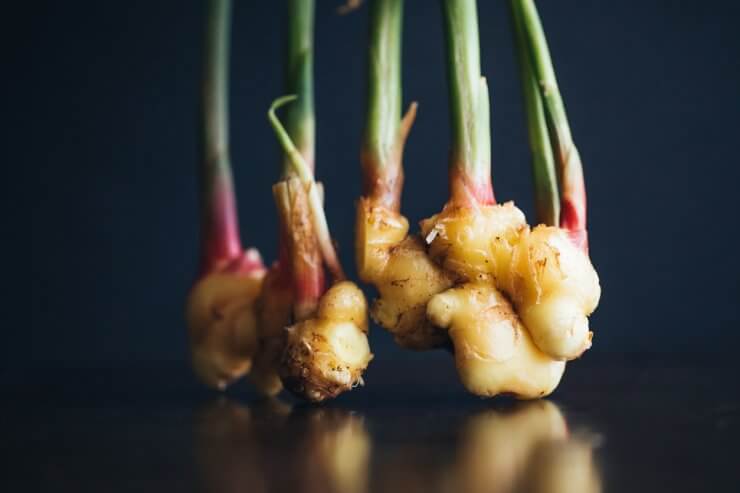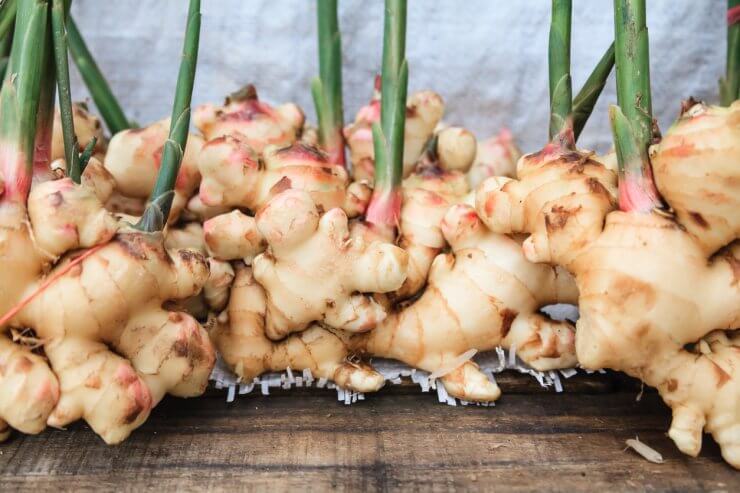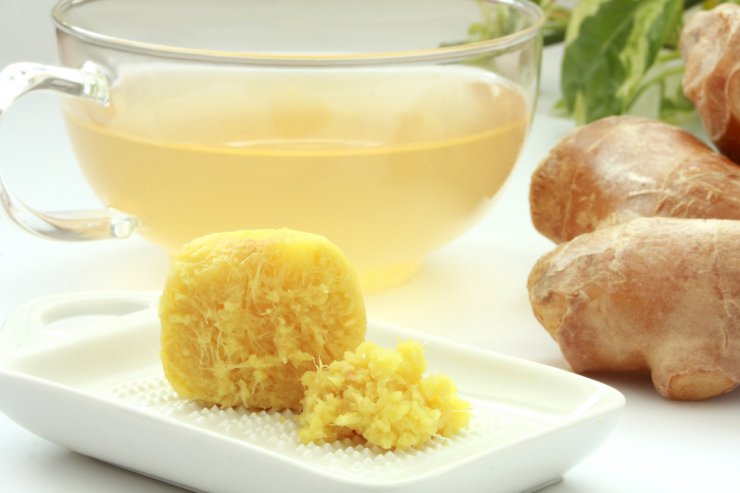
Grating fresh ginger into a stir-fry delivers a bright, zesty bite, while a cup of tea brewed from dried ginger feels hotter, almost peppery, and more lingering. Both experiences come from the same plant, but the difference in flavor isn’t just a matter of freshness–it’s chemistry.
Ginger’s signature “heat” comes from a handful of natural compounds, most notably gingerol and shogaol. What’s fascinating is that the balance between them isn’t fixed. The way ginger is grown, the moment it’s harvested, and what happens to it after harvest can all shift how spicy it tastes and even how potent it is medicinally. That means gardeners and home cooks have the ability to shape ginger’s personality in the kitchen simply by the choices they make along the way.
Gingerol, Shogaol, and the Middle Ground
Fresh ginger is dominated by gingerol, a compound responsible for its crisp, almost citrus-like sharpness. Gingerol is also linked to many of ginger’s well-known benefits, from easing nausea to reducing inflammation. Once ginger is dried or heated for long periods, however, gingerol doesn’t stick around. It transforms into shogaol, a compound with about twice the pungency and a slower, longer burn. Shogaol also carries impressive antioxidant activity, which is one reason dried ginger is often recommended in herbal remedies for colds or circulation support.
There’s another compound worth mentioning: zingerone. This one appears when ginger is cooked at high temperatures, such as in baked goods or stews. Zingerone has a much gentler spiciness and leans more toward warm and sweet, the flavor that anchors gingerbread or candied ginger. Together, gingerol, shogaol, and zingerone explain why ginger can be sharp, fiery, or cozy depending on how you handle it.
Growing Conditions: Flavor Starts in the Soil
While it’s tempting to think ginger flavor is only about what happens after harvest, the plant’s environment plays a role, too. Ginger loves warm, humid climates, and plants that grow in steady heat often show stronger gingerol content than those raised in cooler or shadier spots. Soil health also matters. A bed rich in compost and organic matter tends to support complex, robust flavors, while ginger grown in soil pushed by too much nitrogen fertilizer may grow big but taste diluted.
Watering habits make a difference as well. Ginger likes moisture, but not soggy soil. Overwatering can water down the rhizome’s flavor, while slightly drier conditions–without stressing the plant to the point of harm–may concentrate its compounds. For gardeners, this means the choices you make in caring for your soil and regulating water don’t just affect yield, but also the zing you’ll taste later on.

Harvest Timing: Baby vs. Mature
One of the biggest decisions you’ll make as a ginger grower is when to harvest. Baby ginger, dug up around four to six months after planting, has thin skin, a tender bite, and a mild, slightly sweet flavor. It’s perfect for pickling or for recipes where you want a gentle ginger presence without overwhelming heat.
Leave the plant in the ground for eight to ten months, and you get mature ginger. By this stage, the rhizome has a thicker skin, more fiber, and a higher concentration of gingerol. The bite is sharper and more assertive, the kind of ginger that stands up well in stir-fries or is dried for spice blends. Wait even longer, and the rhizomes may become tougher but more intense, ideal for drying or processing into powders where the spiciness continues to deepen as shogaol takes over.
Just by choosing an early or late harvest, you can shift the flavor spectrum of the ginger you use in your kitchen.
After the Harvest: Where Chemistry Shifts
Once ginger leaves the soil, its chemistry really starts to change. Fresh ginger retains gingerol, which is why it tastes so clean and bright when grated into dishes. The moment you begin drying it–whether in the sun, an oven, or a dehydrator–gingerol starts converting into shogaol. That’s why powdered ginger packs more of a fiery punch than the fresh rhizome you chop up at the cutting board.
Cooking introduces a different transformation. Long simmering or baking produces zingerone, which softens ginger’s sharp edges into a mellow warmth. It’s the difference between the bite of raw ginger in a juice shot and the comforting spice of gingerbread cookies. Pickling and fermenting, on the other hand, mellow the compounds further. The sharpness gives way to aromatic sweetness, as seen in the pink slices of pickled ginger served with sushi.
These changes explain why fresh ginger, dried ginger, and cooked ginger are almost like three different ingredients, each with its own personality and best uses.

Flavor Meets Medicine
For centuries, ginger has been prized as both a food and a medicine, and the gingerol-shogaol balance plays a role here, too. Fresh ginger, rich in gingerol, is especially effective for calming nausea, whether from pregnancy, motion sickness, or chemotherapy. Dried ginger, with its shogaol content, has been used in traditional medicine to fight colds, ease digestive troubles, and stimulate circulation. Cooked ginger, though less medicinally intense, still provides soothing warmth that makes it a staple in comfort foods.
What this means for growers is that you can, in a sense, choose the kind of ginger medicine you’re cultivating. Pick young for gentler, fresh remedies. Grow to maturity and dry it if you’re aiming for stronger medicinal teas. Use cooking methods if what you want is more about comfort and flavor than intensity.
For gardeners, the exciting part of understanding this chemistry is that you can guide your crop toward the flavor you want. If your goal is mild ginger with a fresh snap, keep plants well-watered and harvest young. If you prefer fiery ginger for winter teas or medicinal tonics, grow the plants to maturity, harvest in late fall, and dry or roast the rhizomes. For those who love the warm sweetness of ginger in baking, harvest mature ginger and cook it into syrups, candies, or cookies where zingerone will shine.
An easy way to appreciate the difference is to experiment. Harvest one rhizome young, another at full maturity, and dry a third. Brew each into tea and taste them side by side. You’ll quickly see how harvest timing and processing change the spice in your cup.
The reason fresh ginger and dried ginger taste so different isn’t a mystery–it’s the result of gingerol transforming into shogaol, or gingerol softening into zingerone through heat. From soil care to harvest timing to drying and cooking, every step you take shapes how your ginger tastes and even how it supports your health.
That makes growing ginger more than just raising a spice. It’s an opportunity to experiment, to decide whether you want it mild, fiery, or sweet, and to enjoy the satisfaction of producing exactly the kind of ginger that fits your kitchen and your table.
Zesty Ginger Gardening Guide Available Now!
Ginger is easier to grow than you may think! With the Zesty Ginger Gardening Guide, you’ll have everything you need to know about growing and enjoying this versatile plant—including specific advice about soil requirements and fertilizer, watering techniques to details about avoiding bacterial wilt, and even easy-to-make and delicious recipes that will allow you to enjoy the fruits of your ginger gardening labor!


 Previous
Previous

